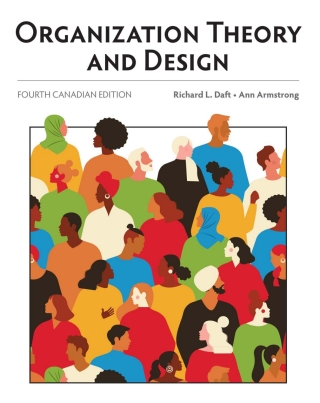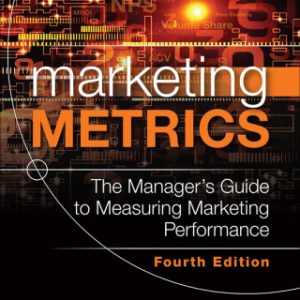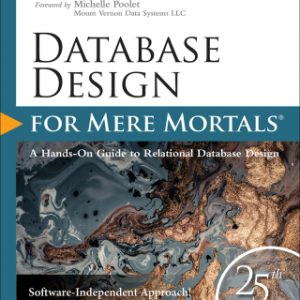Buy Organization Theory and Design, 4th Edition PDF ebook by author Richard L. Daft, Ann Armstrong – published by Cengage Learning Canada Inc. in 2021 and save up to 80% compared to the print version of this textbook. With PDF version of this textbook, not only save you money, you can also highlight, add text, underline add post-it notes, bookmarks to pages, instantly search for the major terms or chapter titles, etc.
You can search our site for other versions of the Organization Theory and Design, 4th Edition PDF ebook. You can also search for others PDF ebooks from publisher Cengage Learning Canada Inc., as well as from your favorite authors. We have thousands of online textbooks and course materials (mostly in PDF) that you can download immediately after purchase.
Note: e-textBooks do not come with access codes, CDs/DVDs, workbooks, and other supplemental items.
eBook Details:
Full title: Organization Theory and Design, 4th Edition
Edition: 4th
Copyright year: 2021
Publisher: Cengage Learning Canada Inc.
Author: Richard L. Daft, Ann Armstrong
ISBN: 9780176915582, 9780176915629
Format: PDF
Description of Organization Theory and Design, 4th Edition:
Organizations must adapt to changing and often challenging environments. This thoroughly updated fourth Canadian edition helps students understand and design organizations for today’s complex environment. The concepts and models offered in this text are integrated with changing events in the real world, presenting the most recent thinking and providing an up-to-date view of organizations. Detailed Canadian examples and cases capture the richness of the Canadian experience, while international examples accurately represent Canada’s role in the world.
Table of Contents of Organization Theory and Design, 4th Edition PDF ebook:
About the AuthorsBrief ContentsContentsPrefacePart 1: Introduction to Organizations and Their EnvironmentsChapter 1: Organizations and Organization TheoryOrganization Theory in ActionThe Evolution of Organization Theory and DesignWhat Is an Organization?Perspectives on OrganizationsDimensions of Organizational DesignFramework for the BookSummary and InterpretationChapter 1 Workbook: Measuring Dimensions of OrganizationsCase for Analysis: GEChapter 2: The External EnvironmentThe Environmental DomainEnvironmental UncertaintyAdapting to Environmental UncertaintyFramework for Organizational Responses to UncertaintyResource DependenceControlling Environmental ResourcesSummary and InterpretationChapter 2 Workbook: Organizations You Rely OnCase for Analysis: The Paradoxical Twins: Acme and Omega ElectronicsCase for Analysis: Vancity: Doing Good, Doing WellPart 2: Organizational Purpose and Structural DesignChapter 3: Strategy, Organizational Design, and EffectivenessThe Role of Strategic Direction in Organizational DesignOrganizational PurposeA Framework for Selecting Strategy and DesignAssessing Organizational EffectivenessContingency Effectiveness ApproachesNew DirectionsSummary and InterpretationChapter 3 Workbook: Identifying Company Goals and StrategiesCase for Analysis: Jones SodaChapter 3 Workshop: Identify Your Goal PreferencesChapter 4: Fundamentals of Organizational StructureOrganizational StructureInformation-Processing Perspective on StructureOrganizational Design AlternativesFunctional, Divisional, and Geographical DesignsMatrix StructureHorizontal StructureVirtual Network StructureHolacracy Team StructureHybrid StructuresApplications of Structural DesignNew DirectionsSummary and InterpretationChapter 4 Workbook: You and Organizational StructureCase for Analysis: Digital Extremes Ltd.Case for Analysis: Aquarius Advertising AgencyChapter 5: Designing Organizations for Social and Environmental PurposeDesigning the Dual-Purpose OrganizationDesigns for Achieving Dual Commercial and Social Welfare GoalsCorporate Social ResponsibilityThe Consequences for Doing GoodDesigning a Structure for Executing a Sustainability ProgramSummary and InterpretationCase for Analysis: Lucky Iron Fish EnterpriseChapter 5 Workshop: Where to Begin – A Framework for Developing Your CSR StrategyPart 3: Open-System Design ElementsChapter 6: Interorganizational RelationshipsOrganizational EcosystemsResource DependenceCollaborative NetworksPopulation EcologyInstitutionalismSummary and InterpretationChapter 6 Workbook: Management FadsCase for Analysis: AppleCase for Analysis: Hugh Russel, Inc.Chapter 6 Workshop: The ShamatosiChapter 7: Designing Organizations for the International EnvironmentEntering the Global ArenaDesigning Structure to Fit Global StrategyBuilding Global CapabilitiesCultural Differences in Coordination and ControlThe Transnational Model of OrganizationSummary and InterpretationChapter 7 Workbook: What Is Your Cultural Intelligence?Case for Analysis: Ivanhoe MinesCase for Analysis: Rhinebeck IndustrialChapter 7 Workshop: Working AbroadChapter 8: Organization Size, Life Cycle, and DeclineOrganization Size: Is Bigger Better?Organizational Life CycleOrganizational Bureaucracy and ControlBureaucracy in a Changing WorldOrganizational Control StrategiesOrganizational Decline and DownsizingSummary and InterpretationChapter 8 Workbook: Control MechanismsCase for Analysis: Daily Grind Coffee Inc.Case for Analysis: I Love Rewards Inc.Part 4: Internal Design ElementsChapter 9: Organizational Culture and EthicsOrganizational CultureCulture and Organization DesignCulture Strength and Organizational SubculturesEthical Values and Social ResponsibilitySources of Ethical Values in OrganizationsHow Leaders Shape Culture and EthicsOrganizational Culture and Ethics in a Global EnvironmentSummary and InterpretationCase for Analysis: Queen’s Returns Radler GiftCase for Analysis: NASCARChapter 9 Workshop: What Is Your Level of Ethical Maturity?Chapter 10: Manufacturing and Service Technologies and DigitizationCore Organization Manufacturing TechnologyContemporary ApplicationsCore Organization Service TechnologyNoncore Departmental TechnologyDepartment DesignWorkflow Interdependence among DepartmentsImpact of Technology on Job DesignSummary and InterpretationChapter 10 Workbook: Bistro TechnologyCase for Analysis: Digitalization in the Manufacturing Sector: Skills in TransitionChapter 10 Workshop: Manufacturing and Big Data – Organize the ProjectPart 5: Managing Dynamic ProcessesChapter 11: Innovation and ChangeInnovate or Perish: The Strategic Role of ChangeElements for Successful ChangeTechnology ChangeNew Products and ServicesStrategy and Structure ChangeCulture ChangeStrategies for Implementing ChangeSummary and InterpretationChapter 11 Workbook: Innovation ClimateCase for Analysis: Osoyoos BandChapter 12: Conflict, Power, and PoliticsIntergroup Conflict in OrganizationsPower and OrganizationsPolitical Processes in OrganizationsUsing Power and PoliticsSummary and InterpretationChapter 12 Workbook: How Do You Handle Conflict?Case for Analysis: The Irving Dynasty to End?Case for Analysis: The Burlington PlantChapter 13: Decision-Making ProcessesDefinitionsIndividual Decision MakingCognitive BiasesOrganizational Decision MakingThe Learning OrganizationContingency Decision-Making FrameworkSpecial Decision CircumstancesSummary and InterpretationChapter 13 Workbook: BiasesCase for Analysis: The Big CarrotChapter 13 Workshop: Mist RidgeIntegrative CasesIntegrative Case 1.0: Disorganization at Semco: Human Resource Practices as a Strategic AdvantageIntegrative Case 2.0: Apple Inc.’s Foxconn Test Revisited (2010-2020)Integrative Case 3.0: Walmart’s Failures in Entering Three Developed MarketsIntegrative Case 4.0: IKEA: Scandinavian StyleIntegrative Case 5.0: “Ramrod” StockwellIntegrative Case 6.0: Costco: Join the ClubIntegrative Case 7.0: The War of the Woods: A Forestry Giant Seeks PeaceEndnotesGlossaryName IndexOrganization IndexSubject Index





